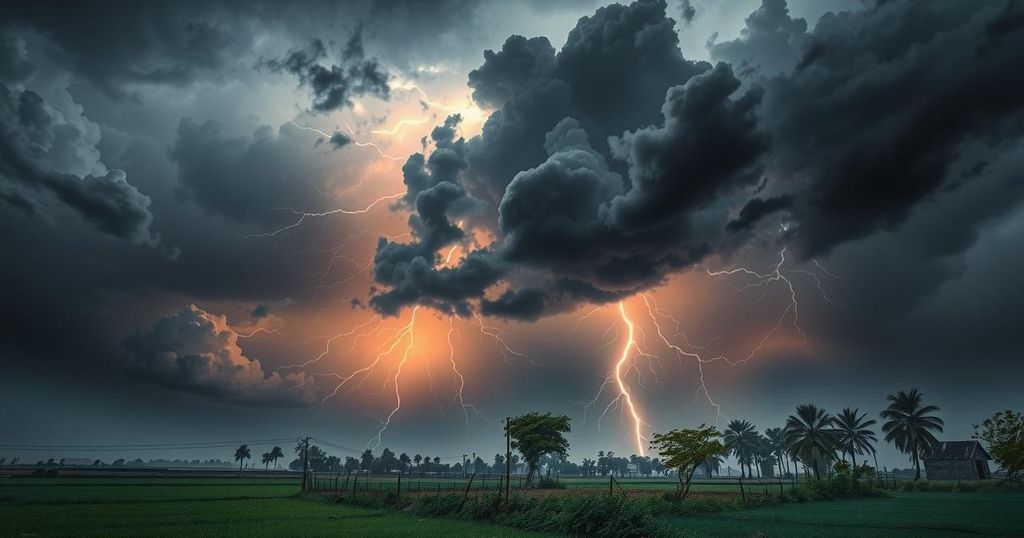Tragic Thunderstorm Claims Over 100 Lives in India

Intense thunderstorms and lightning strikes across northern India resulted in over 100 deaths, mostly in Bihar and Uttar Pradesh, despite prior warnings. The IMD has predicted more storms, and authorities are addressing information dissemination challenges. Lightning is a significant natural hazard in India, linked to climate change and increased outdoor labor.
In a tragic occurrence over the last 24 hours, thunderstorms and lightning strikes have claimed the lives of at least 100 individuals across northern and eastern India. The worst-hit state is Bihar, where 82 fatalities were reported, including 20 deaths from a single district. Uttar Pradesh recorded 18 deaths, while one farmer died in Uttarakhand. Similar incidents in Nepal led to the deaths of at least eight people due to lightning and heavy rain.
Despite warnings issued by the India Meteorological Department (IMD), most of the victims were caught outdoors. A yellow alert was in effect for at least a dozen states. Reports indicate that many fatalities occurred in agricultural fields during the storms, highlighting ongoing challenges in disseminating weather updates, particularly in rural areas.
Officials have advised residents to remain indoors as more storms are forecasted for the week ahead. In response, the Chief Ministers of Uttar Pradesh and Bihar have pledged compensation of 4 lakh rupees to the victims’ families. While the rainfall provides some relief from soaring summer temperatures, the IMD warns that temperatures will rise again following this period of rain.
Heavy precipitation and storm activity are expected to increase in several districts of Bihar, such as Madhubani and Patna, this coming Friday and Saturday. Notably, lightning strikes have accounted for approximately 36 percent of weather-related deaths in India, according to the National Crime Records Bureau. Historical data shows over 101,000 deaths from lightning strikes between 1967 and 2020, with increased frequency of such events linked to climate change.
The rise in lightning activity is also attributed to deforestation and increased outdoor labor among the population. A recent study by India’s Ministry of Earth Sciences indicated a 30 percent increase in lightning incidents from 2020 to 2022. Experts explain that warmer air holds more moisture, resulting in stronger storms and increased lightning. Consequently, awareness initiatives like the Lightning Resilient India campaign and real-time alert apps such as Damini are being promoted. However, access to these resources remains limited in more remote areas where deadly strikes are prevalent.
The recent thunderstorms in India have resulted in severe consequences, with over 100 fatalities reported across several states, particularly in Bihar and Uttar Pradesh. Despite the availability of weather-related warnings, many individuals were caught outdoors, revealing gaps in communication and preparedness. Efforts to enhance awareness and provide real-time updates are ongoing, yet challenges persist in rural regions. The impact of climate change on lightning activity underscores the need for continued vigilance and improved safety measures.
Original Source: www.independent.co.uk







